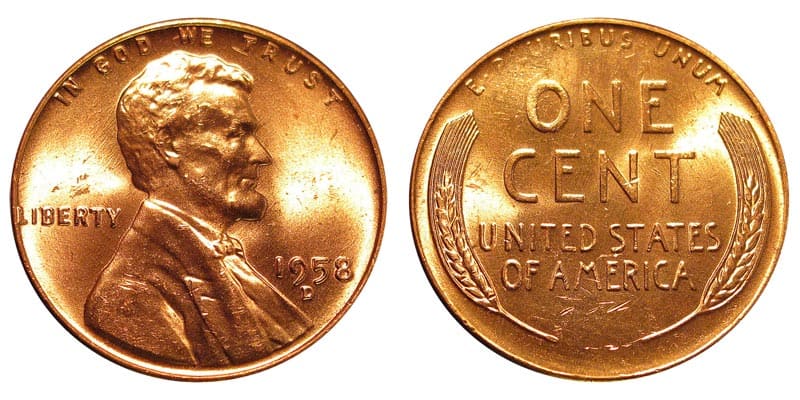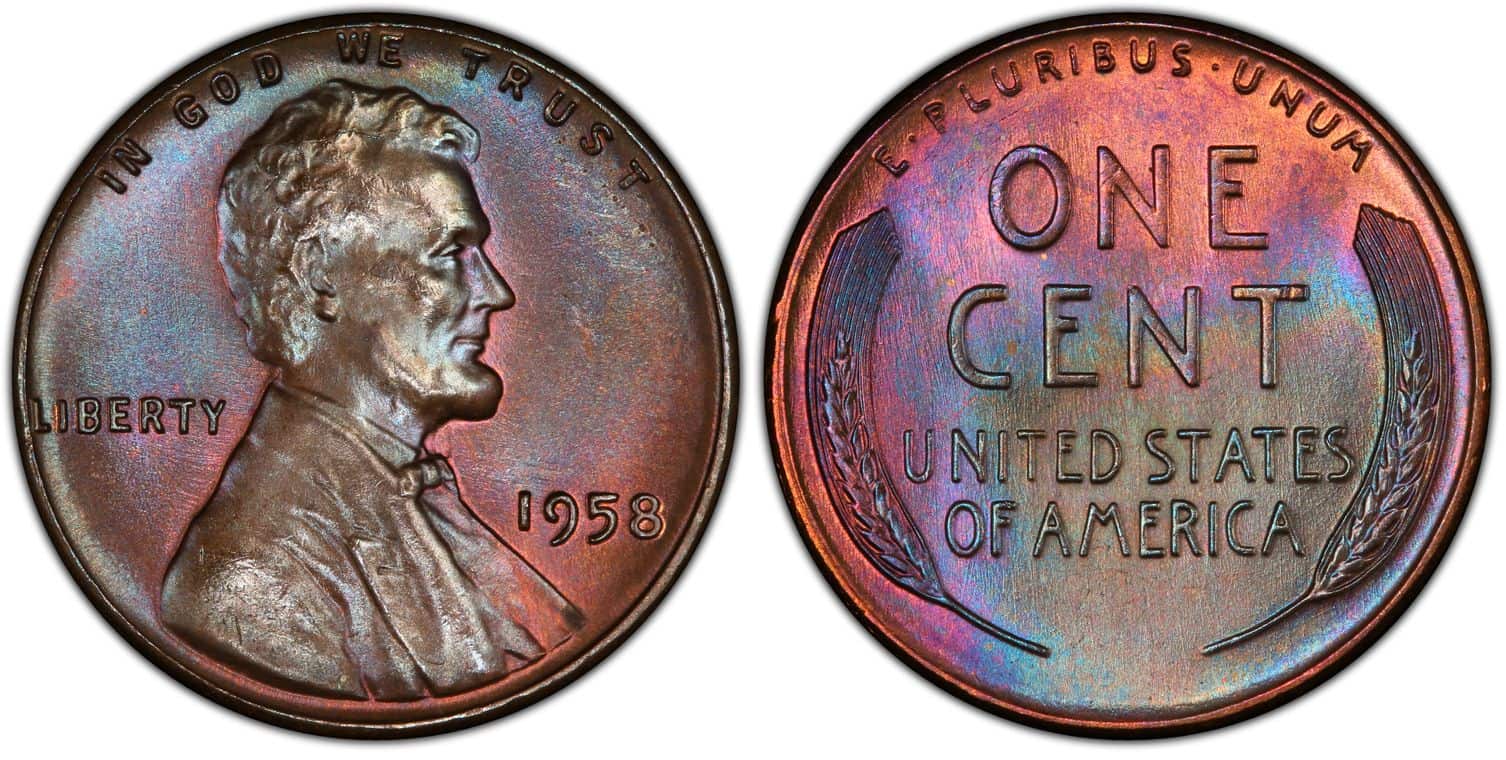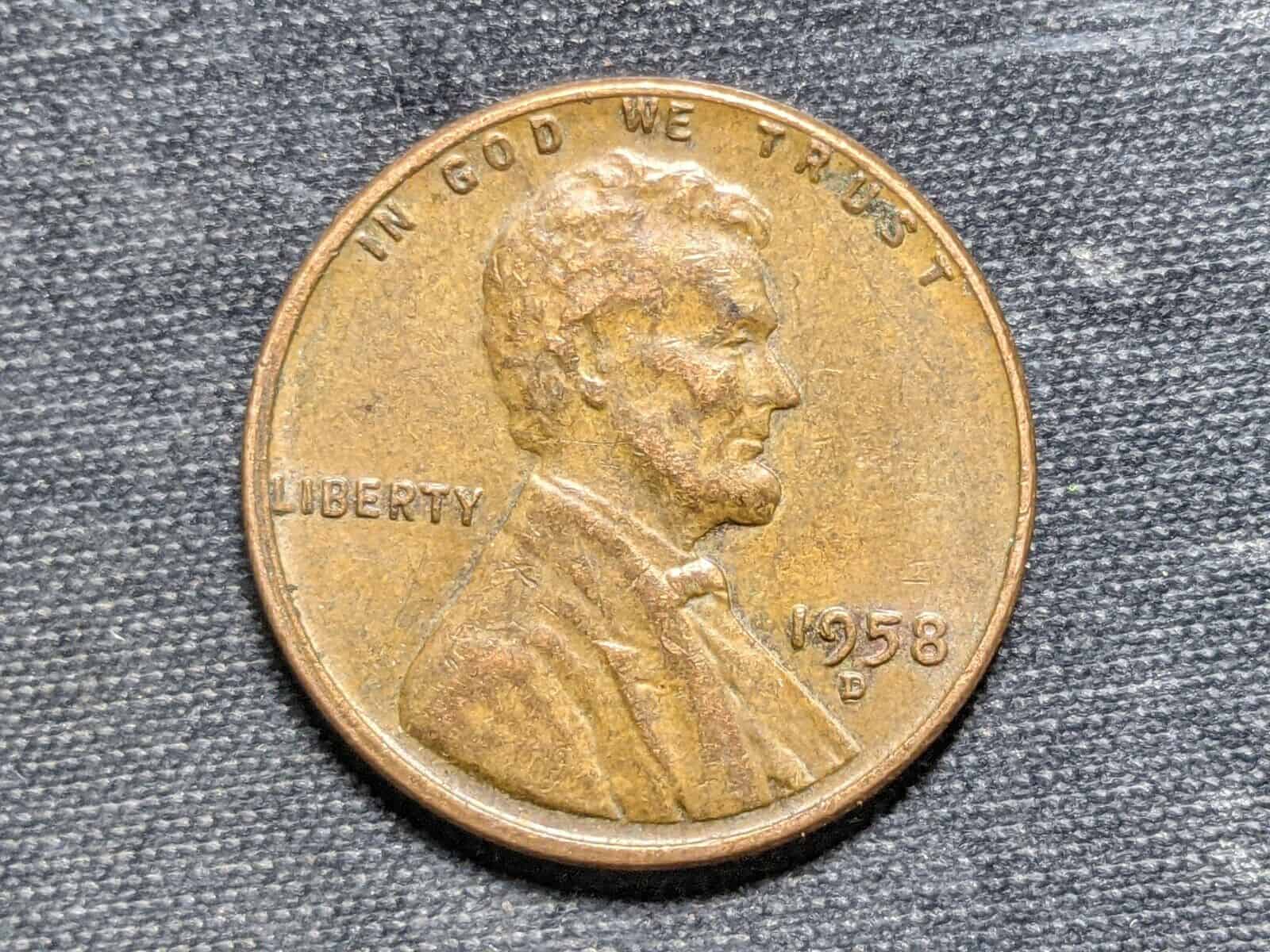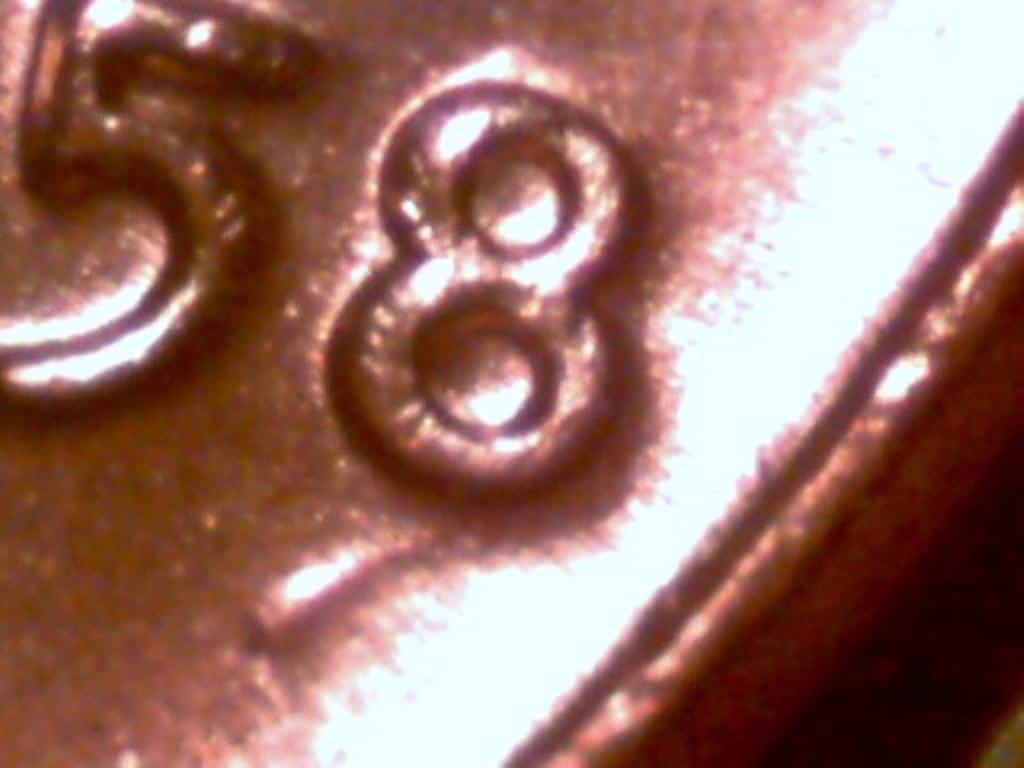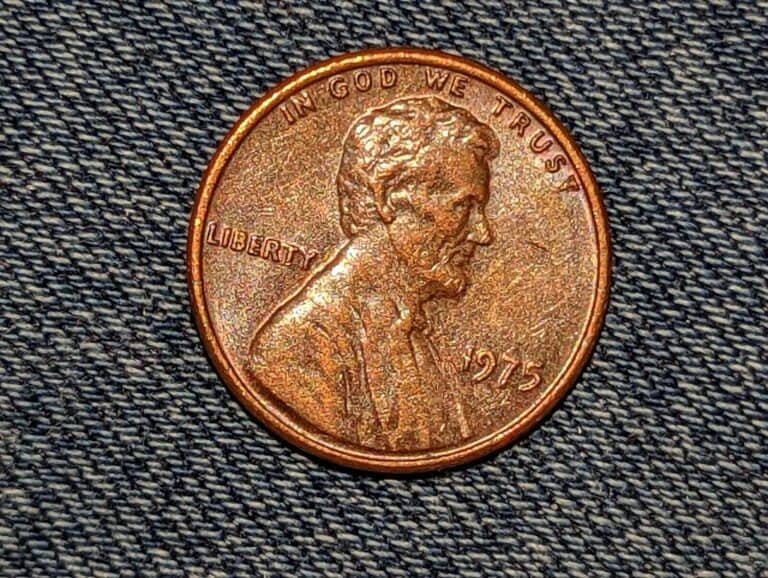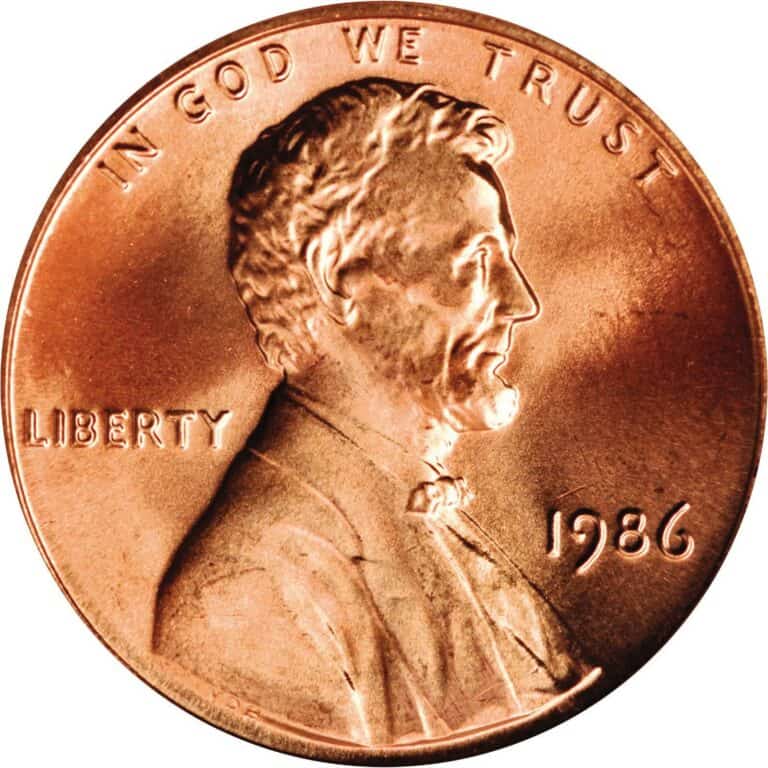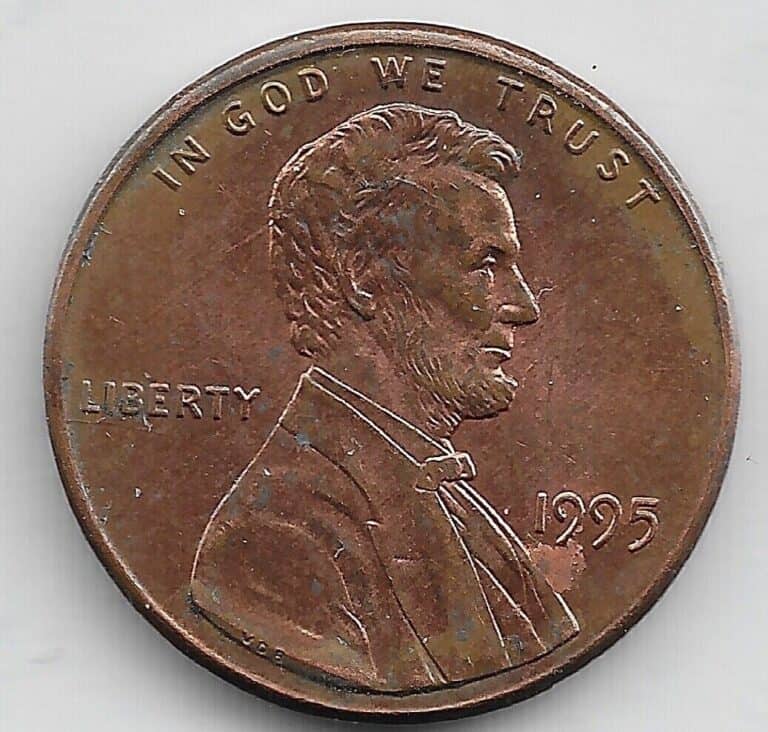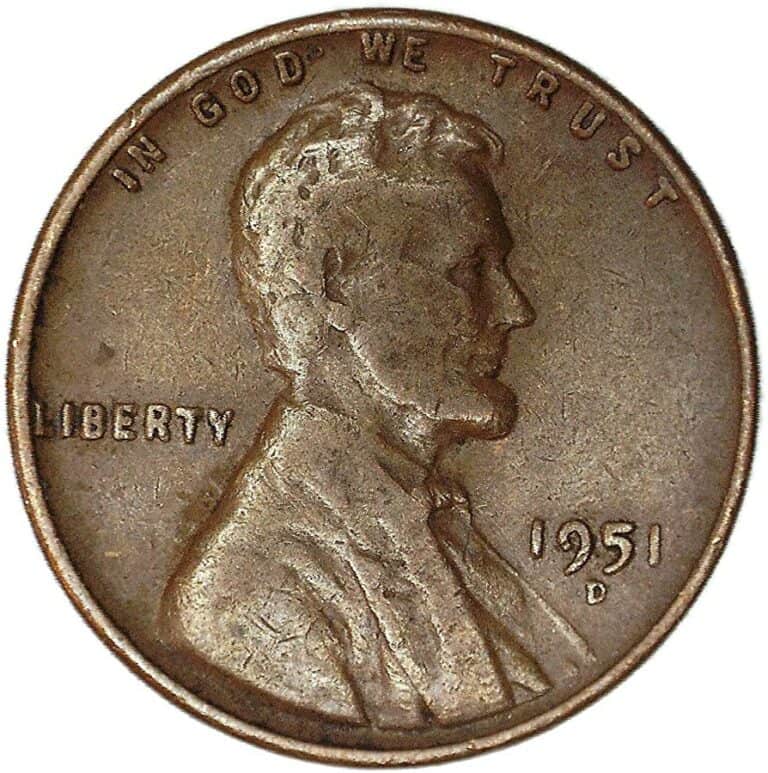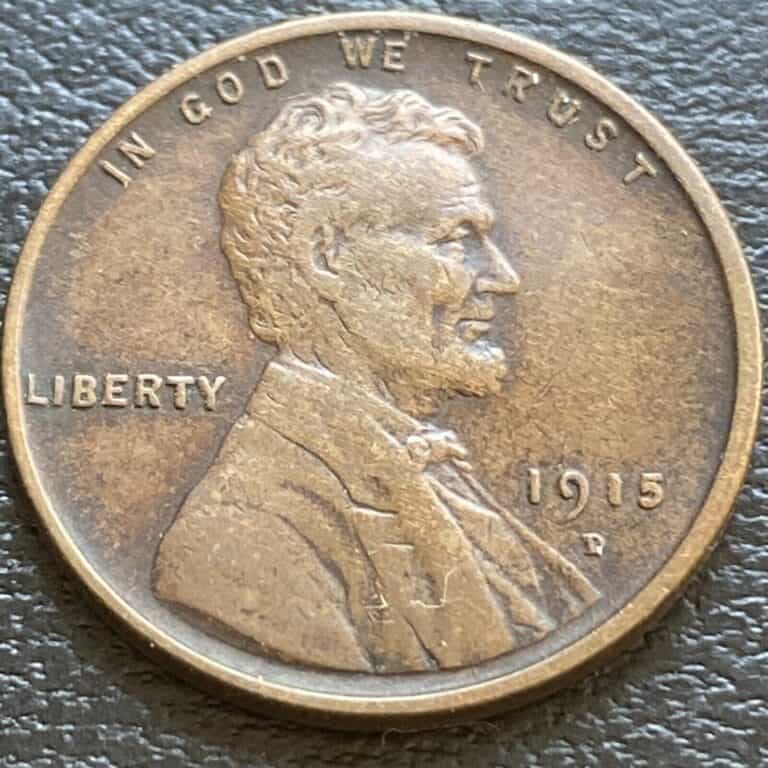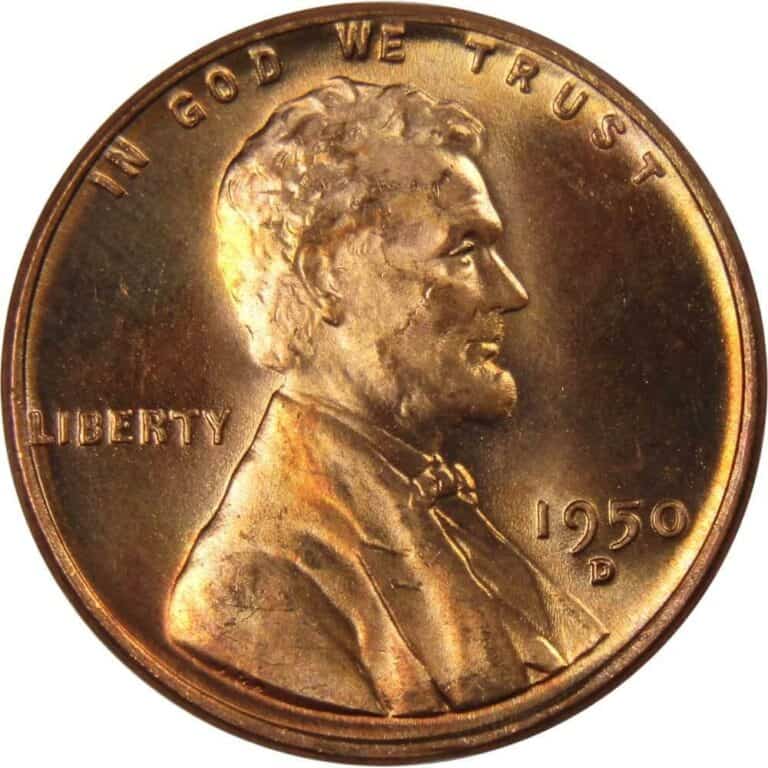1958 Wheat Penny Value: How Much is it Worth Today?

Racial segregation was illegalized and the National Aeronautics and Space Administration (NASA) was established in 1958. Additionally, an economic recession swept across the United States and past its borders. Despite all that, the US Mint continues with its duties, one of which is to mint the last issue of the Lincoln wheat penny.
As the last year of the Lincoln wheat cent, we’ll talk about the 1958 wheat penny, its value, varieties, grading, errors, and frequently asked questions!
1958 Wheat Penny Value |
||||
| Variety | MS60BN | MS63RB | MS65RB | MS67RD |
| 1958 No Mint Mark P Wheat Penny Value | $0.50 | $3.50 | $10.50 | $645 |
| 1958 D Wheat Penny Value | $0.50 | $3.50 | $8.75 | $250 |
| 1958 Proof Wheat Penny Value | $7.50 (PR64RD) | $30 (PR65RC) | $100 (PR67RC) | $7,000 (PR69RDU) |
1958 No Mint Mark P Wheat Penny Value
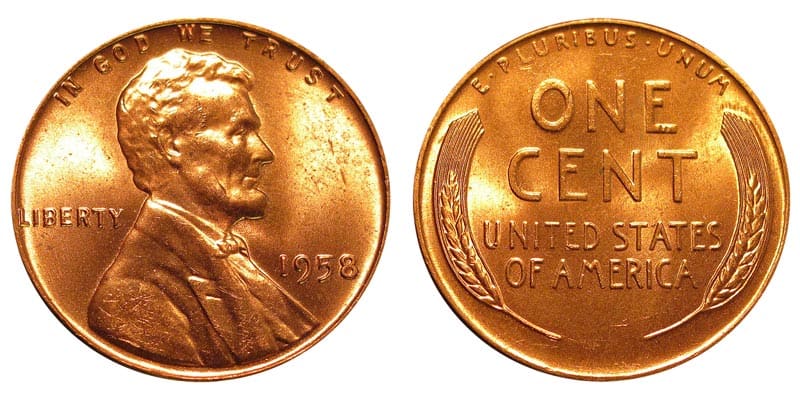
The Recession of 1958 is considered to be the most significant economic recession in the post-World War II era. Many people were opting out of buying new cars, disincentivized to building new houses, and many capital goods industries were experiencing a gradual increase of incoming business since 1956.
While the Lincoln wheat penny has seen better mintages just a few years before 1958, this recession, also called the Eisenhower Recession, touched a smidge of the Philadelphia mintage. From 1957 to 1958, the mintage of the Lincoln wheat penny halved from the 1956 mintage, from over 420 million pieces in 1956 to over 280 million pieces and 250 million pieces in 1957 and 1958, respectively.
Although the recession would not probably incite positive connotations in the issue, the 1958 wheat penny is the last issue for the Lincoln wheat cent series, making it a popular issue among collectors. With many collectors having started their numismatic hobbies with this coin, the beloved series’ end is considered a must-have for their collections.
Through sheer numbers and recency, the 1958 P wheat penny is plentiful across all grades even up to the gem grades. The population drastically drops on higher gems and fully Red examples on those grades can be challenging, but not impossible, to find.
Brown 1958 P wheat pennies are extremely cheap, even at gem grades, and you can get one of them for not more than $12.50. Red-Brown varieties only increase the price range almost insignificantly, starting at $0.75 and peaking at $17.50. Red examples might start to dent your budget, but only at the highest grade. You can have an MS66RD 1958 P wheat penny for $42, but the best one available, only a grade higher at MS67, will set you back $645.
The current auction record price is $9,000 for an MS67+RD piece.
1958 D Wheat Penny Value
In 1955, the San Francisco Mint suspended its minting operations when the US Mint realized that it was more cost-effective to increase the mintage at Denver and ship those coins westward.
Even though the San Francisco branch had minted generally better coins than both Philadelphia and Denver, its small and inadequate office cannot keep up with the burgeoning demand for coinage. This branch would have to wait for 13 more years before minting coins again and later on taking over modern proof coinage from the Philadelphia Mint.
Ever since then, the Denver Mint had been picking up the slack, doubling its mintage of the Lincoln wheat penny in 1956. It would maintain a mintage of over 1 billion pieces before being slightly stifled by the 1958 recession, where it would only mint over 800 million pieces.
Similar to the 1958 P wheat penny, the sheer amount of pieces minted and the relative newness of the 1958 D wheat penny make it plentiful across all grades and varieties spare for the highest grade available. The examples of this variety were generally well made, although an impatient buyer might stumble across imperfections caused by worn and chipped dies.
The price curve of the Brown 1958 D wheat penny is the same as the Brown 1958 P wheat penny, from $2 to $12.50. Red-Brown examples are slightly cheaper than that of 1958 P, peaking only at $14. Red specimens are also cheaper, starting at $2.50. You can get a cheap gem, MS66, for only $25, but the highest grade available will cost you $250.
The current auction record is an MS67+RD specimen, which sold for $3,360.
1958 Proof Wheat Penny Value

Although the other varieties were mostly impacted by the short recession, the 1958 proof coinage of Lincoln wheat pennies had another reason for its drop in mintage. The previous year minted quite an abundance of 1957 proof coins, with over 1.2 million pieces minted. Although the previous issues showed a cadence of doubling, the 1957 proof wheat pennies ended up with too much supply that demand couldn’t match.
The Philadelphia Mint decided to reel the numbers back, settling on a 30% reduction and a final mintage count of over 800,000 pieces minted for the 1958 proof wheat penny issue. The reduction did not affect the availability of these proofs, being plentiful in Red varieties. There are also plenty of Cameo examples for choice collectors and Ultra/Deep Cameo specimens are enough for those who are willing to shell out the money for it.
With the multiplicative increases in mintage over the 1950s, the master hubs evidently wore out, which caused certain minute details on the coins to become less pronounced. Most notably, the obverse which contains Lincoln’s bust suffered a great loss of detail on Lincoln’s beard, making him look like he has an elongated chin.
The Red 1958 proof wheat penny starts out cheap at $7.50 for a PR64 piece and modestly increases up to $85 for a PR68 example. The best one for this variety, PR69, can be had for $450.
Cameo varieties start at $15 for PR64, modestly increasing up to $100 for PR67. The highest grades, PR68 and PR69, are available for $750 and $1,200, respectively. The Ultra Cameo specimens start at $540, then steeply increase up to $7,000 for a PR69 piece.
The current auction record price is $12,338 for a PR68DC specimen.
1958 Red Wheat Penny Value
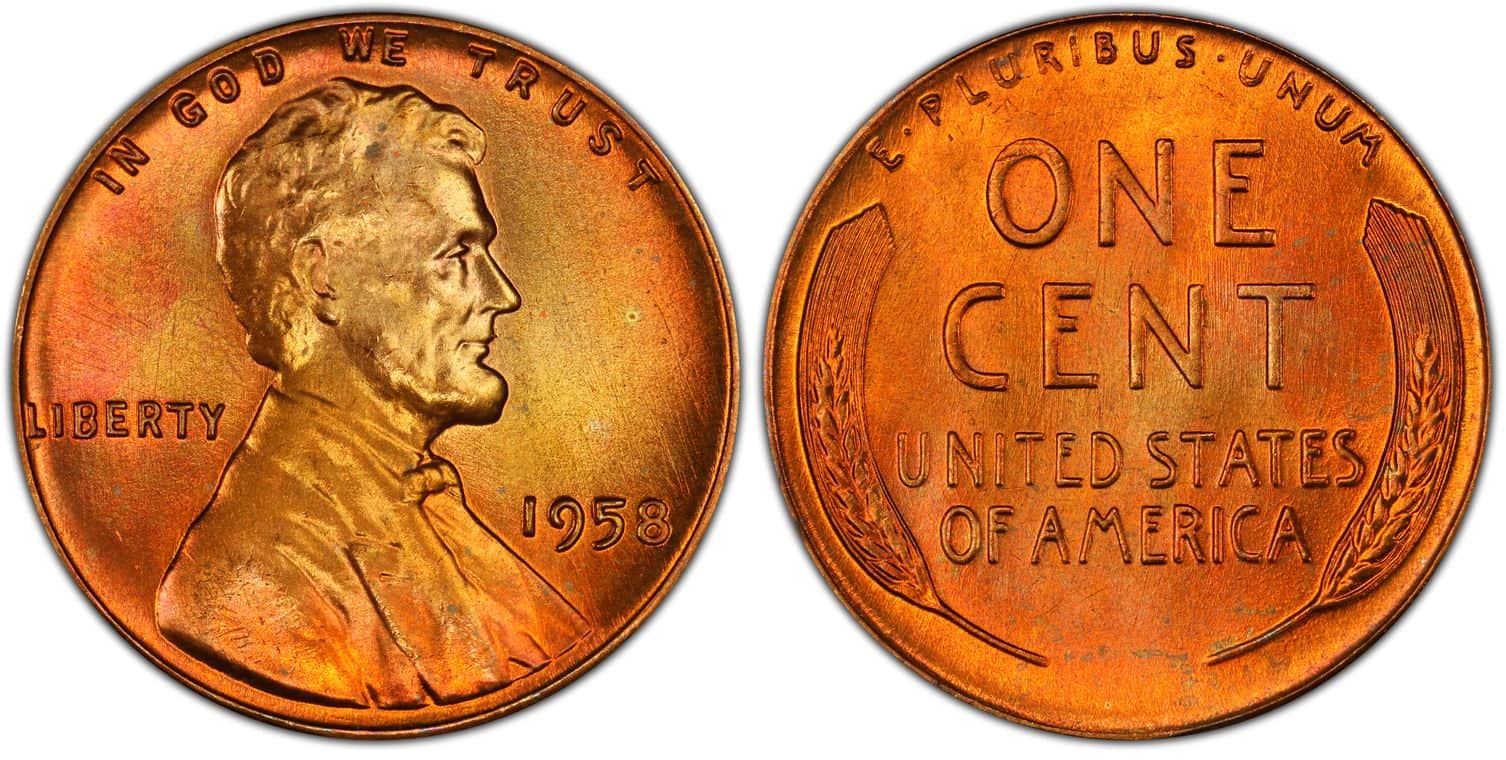
The Lincoln wheat cent series, in circulation from 1909 to 1958, included the 1958 wheat penny made mostly of copper, except for the wartime pennies during World War II.
Freshly minted cents have a vibrant red hue, which serves as a sign of a new or well-preserved coin. Coin grading agencies classify coins with at least 90% of their surface maintaining the red color as “Red” coins. To qualify for this designation, coins must have a grade of MS60 or above, indicating a mint state. Consequently, collectors place a higher value on these coins than on other varieties.
1958 Red-Brown Wheat Penny Value
As coins circulate or are stored improperly, the copper on their surface reacts with oxygen and water vapor, causing them to turn brown.
When at least 10% of a coin’s surface changes to brown while still retaining some red, it is classified as a Red-Brown coin. This designation is only given to mint state coins, similar to the Red coin. While Red-Brown coins are not as highly valued by collectors, they are still considered superior and command a higher premium than most circulated coins.
1958 Brown Wheat Penny Value
Coins that have undergone heavy circulation or were stored inadequately, exposing them to the atmosphere, will develop a chocolate brown color over their entire surface. Coins that have at least 90% of their surface oxidized are referred to as Brown coins.
Brown coins are found in all grades, and they are often considered to be of the least value among all colors. They are also the most frequently encountered type of copper coins, including wheat pennies. Although Mint State Brown coins are available, they do not command the same premium as their Red-Brown and Red counterparts.
1958 Wheat Penny Grading
The Sheldon coin grading scale, a universal system for evaluating the quality of coins, is used to judge 1958 wheat pennies. This system provides collectors and numismatists with a standard for assessing any coin’s quality. The scale ranges from 1, indicating the most circulated quality, to 70, representing the perfect uncirculated coin.
In addition, the Lincoln wheat pennies receive an extra designation based on their color, which changes as the copper on their surface reacts with the atmosphere. The three special designations, in increasing order of quality, are Brown, Red-Brown, and Red.
Rare 1958 Wheat Penny Error List
1958 Wheat Penny DDO Error
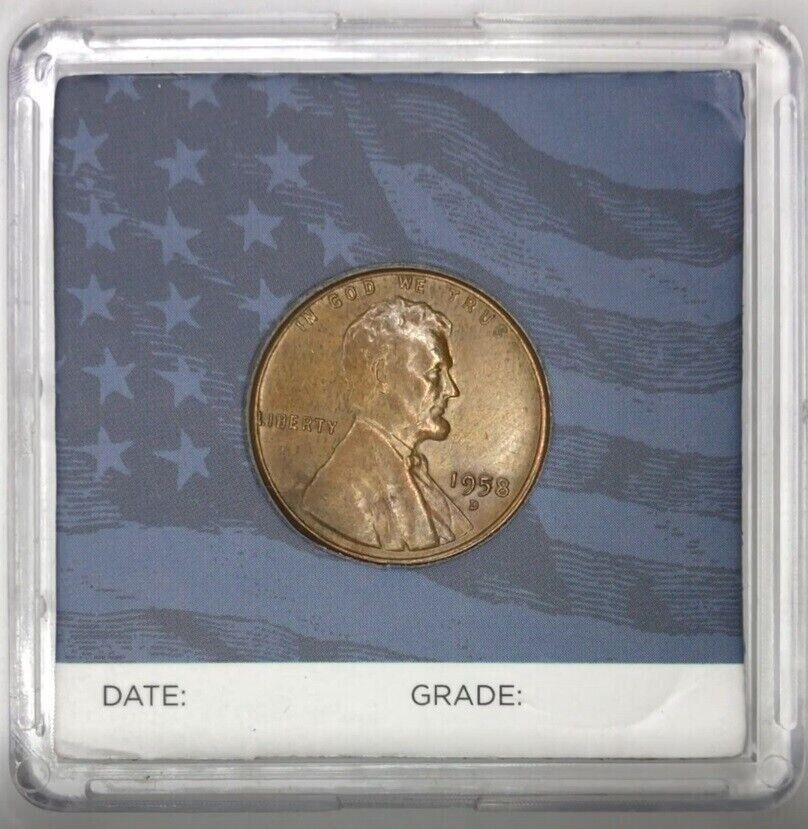
The doubled die error is an error that occurs in the hubbing process. When the hub, which has a positive impression of the design, is pressed onto a blank die to transfer a negative impression of the design and does so multiple times, there might be instances when the subsequent presses may not align with the first one. This results in a doubled design that manifests often as tiny nubs on the edges of certain design elements.
However, the 1958 wheat penny has a very particular variety of the doubled die error. Instead of minute design nubs, the doubled design is very clearly seen on multiple elements of the design. LIBERTY and IN GOD WE TRUST are very clearly doubled on the obverse of the coin. This variety is considered to be one of the strongest DDO errors in the entire series.
It is also one of the rarest coins. There are only three known examples containing this specific error, and the current auction record was an MS65RD piece sold just this year, 2023, for over $1.1 million. That’s a lot of money for a coin that only had a face value of one cent!
1958 Wheat Penny RPM Error
The repunched mintmark error is a common error that occurs similarly to a DDO error. The mintmark is often punched separately from the design, and oftentimes, a worker has to punch the mark multiple times to get a clear mark. When the subsequent punches do not align properly, a part of the first punches is visible underneath the terminal mintmark.
Of course, since this is a mintmark error, only the 1958 D wheat penny variety has this error. This error is also relatively minor and common, so it may not fetch as much value as the error above.
1958 Wheat Penny Die Scratch Error
A 1958 wheat penny started to circulate around the numismatic community, claiming that it had an overdate error (1958 on top of 1957). Many experts were doubtful about that claim since the circumstances required to produce an overdate error were gone by 1909. Overdates were only possible back then because the date was punched separately, like the mintmark. After 1909, the date is part of the design on the die.
After deliberation and further inspection, many experts now believe that these 1958 pennies with an alleged overdate error were nothing but coins with a die scratch error. The supposed overdate element is now considered to be a minor die break that happened to look very similar to a 7.
1958 Wheat Penny FAQ
Is a 1958 wheat back penny worth anything?
The 1958 wheat back penny, also called the Lincoln wheat cent, may not be worth much unless you have an uncirculated example, certified by coin grading agencies, with you. The color of the coin will also factor in the final value of the coin.
For example, you can sell a Brown uncirculated coin for at most $12.50. A Red-Brown uncirculated piece can go as high as $14 to 17.50, depending if it has a mintmark or not. The truly rare examples, such as Red specimens, can sell for as high as $250 to $645.
What is the error on a 1958 Wheat Penny?
The 1958 wheat penny has a prominent variety of DDO errors. In fact, it is considered to be one of the strongest DDO errors across the entire Lincoln wheat cent series, together with the 1955 wheat penny DDO piece. The doubled elements LIBERTY and IN GOD WE TRUST on the obverse of the coin can be very clearly seen at a glance.
It is also a very rare coin, with only 3 pieces known to exist. One of them was sold for over 1 million dollars!
